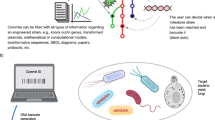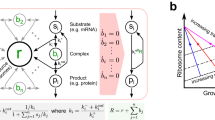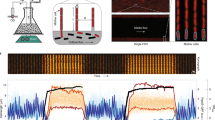Abstract
THE use of continuous line tissue culture cells appeals to many biologists because successive quantitative experiments may be carried out on standard populations of genetically homogeneous cells. But there are many difficulties in such standardization which are magnified when large numbers of cells are required. The major hazards are genetic change and contamination of cultures by a variety of organisms. The most insidious sort of contaminant is the organism the growth of which is partly suppressed by the antibiotics in the medium so that its presence goes undetected for many passages.
This is a preview of subscription content, access via your institution
Access options
Subscribe to this journal
Receive 51 print issues and online access
$199.00 per year
only $3.90 per issue
Buy this article
- Purchase on SpringerLink
- Instant access to full article PDF
Prices may be subject to local taxes which are calculated during checkout
Similar content being viewed by others
References
Macpherson, I., and Stoker, M., Virology, 16, 147 (1962).
Vantsis, J. T., and Wildy, P., Virology, 17, 225 (1962).
Russell, W. C., Gold, E., Keir, H. M., Omura, H., Watson, D. H., and Wildy, P., Virology, 22, 103 (1964).
House, W., and Wildy, P., Lab. Pract., 14, 594 (1965).
Author information
Authors and Affiliations
Rights and permissions
About this article
Cite this article
SHEDDEN, W., WILDY, P. Regular Supply of Large Numbers of Standard Continuous Line Cells. Nature 212, 1068–1069 (1966). https://doi.org/10.1038/2121068a0
Issue date:
DOI: https://doi.org/10.1038/2121068a0



